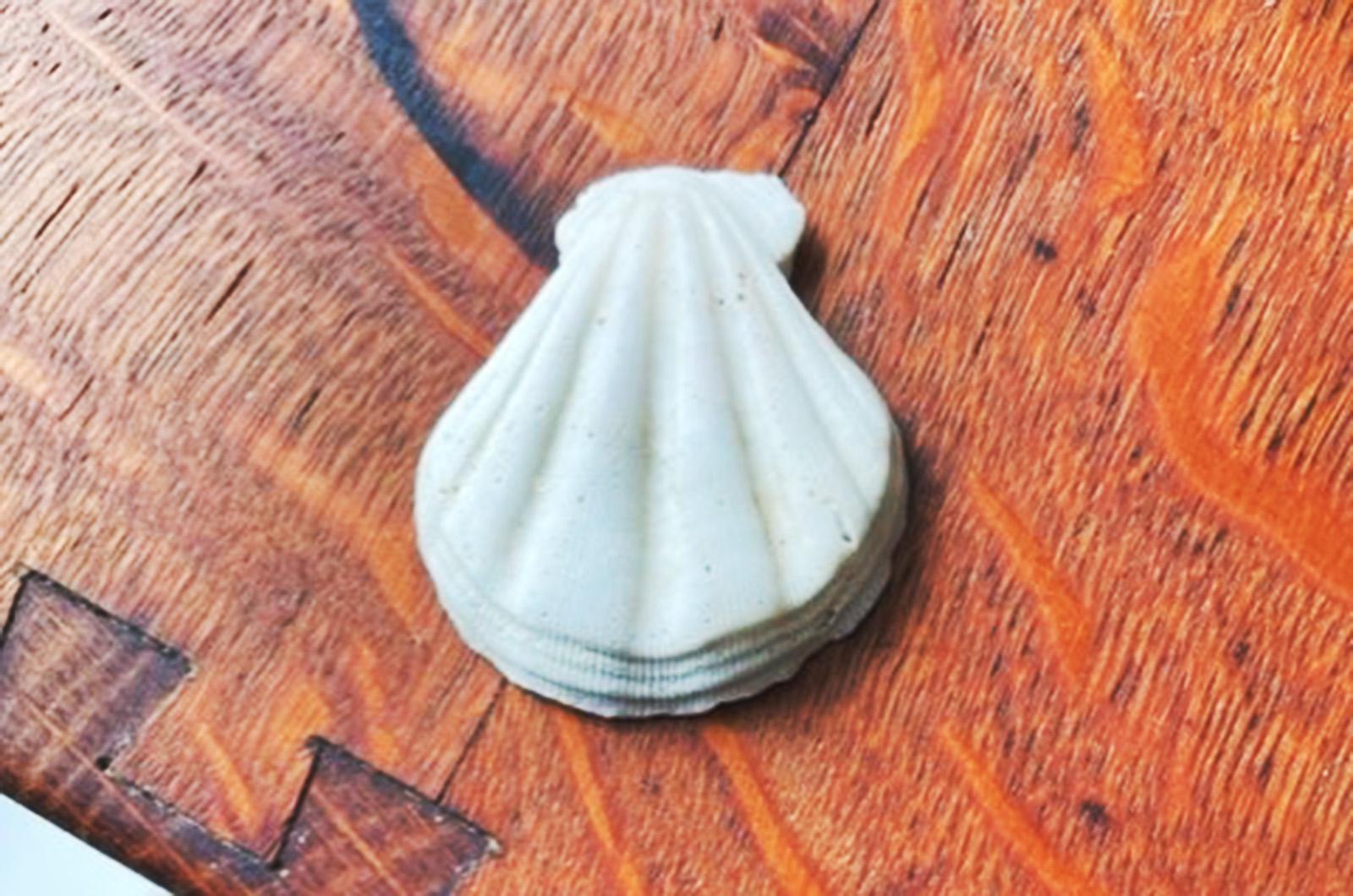He was a man among mollusks.
Jean-Baptiste Pierre Antoine de Monet, the chevalier de Lamarck, was a French naturalist with an notable name. His fanciful designation was a sign of the times, so to simplify, he was usually just called Jean-Baptiste Lamarck.
Mr. Lamarck became known for his most significant work, Système des animaux sans vertèbres. In 1801, this was the most comprehensive book on invertebrates to date and it made him the premier authority on animals without backbones.
Lacking a spine was not a problem for the many species he described. One of these spineless wonders that he is credited with identifying and naming was plicatula gibbose. Known colloquially as the Atlantic kitten or cat paw, this species is a small and simple shell, a bivalve that one would notice for its petite size and cute, feline feet-like shape.
Chappaquiddicker Nancy Slate didn’t miss this mini-marvel, sharing that she found a kitten paw shell at Chappy Point. Kitten paws are marine pelecypods, the class that includes bivalves such as clams, oysters and scallops.
She knew that this species is native to the southern Atlantic and Gulf coasts and didn’t belong in our northern waters. Mentioning that her mother, like so many folks, enjoyed shell collecting on her travels, she surmised that this shell was brought from somewhere else and deposited by a backbone-owning human on this beach far away from its original home.
It must be human nature to take and leave natural objects. The last time this species of shell was found on a Vineyard beach it was discovered with a group of other nonnative shells, likely dumped by a collector disposing of their cache.
That earlier account of lost and found shells collected — or recollected — by a local scientist was documented by me in 2018. It received a comment two years later from a Californian who admitted that she “understands why the shells were put back into the ocean, or at least on the beach.” She further explains, “I have done something similar when lightening my load of rocks and shells. You feel that’s the respectful thing to do with them. I sometimes feel a bit sheepish if they were not all from the place where I ‘put them back.’ But the sentiment is, well, you can’t throw away agates and shells…. And you imagine the delight of someone else finding them. So you pack them up and back they go, to have another day in the ocean where they kind of belong. I often wondered about the casual geologist or biologist here being surprised by the slight incongruity of my returns.”
Her sentiments ring true to many. At Felix Neck, we have even received boxes of shells sent through the mail from afar with a request to return them to Vineyard waters. We spread the local ones and keep the exotic ones — just so as not to surprise an unsuspecting scientist!
Kitten paws and other shells would have great stories of travel and adventure to share if they could. And it’s likely this Chappy specimen has many more voyages ahead. Because of its sturdy nature, kitten paws and other marine mollusks could persist for generations in a jar of shells on a shelf, or be thrown back in to the ocean for another ride with the tides.
The discovery of the southern shell provides a chance to ponder to power of nature to enchant us, the proclivity of people to collect and hold onto these types of treasures and the imagination of a future finder being just as enchanted.
Suzan Bellincampi is Islands director for Felix Neck Wildlife Sanctuary in Edgartown and the Nantucket Wildlife Sanctuaries. She is also the author of Martha’s Vineyard: A Field Guide to Island Nature and The Nature of Martha’s Vineyard.




Comments
Comment policy »